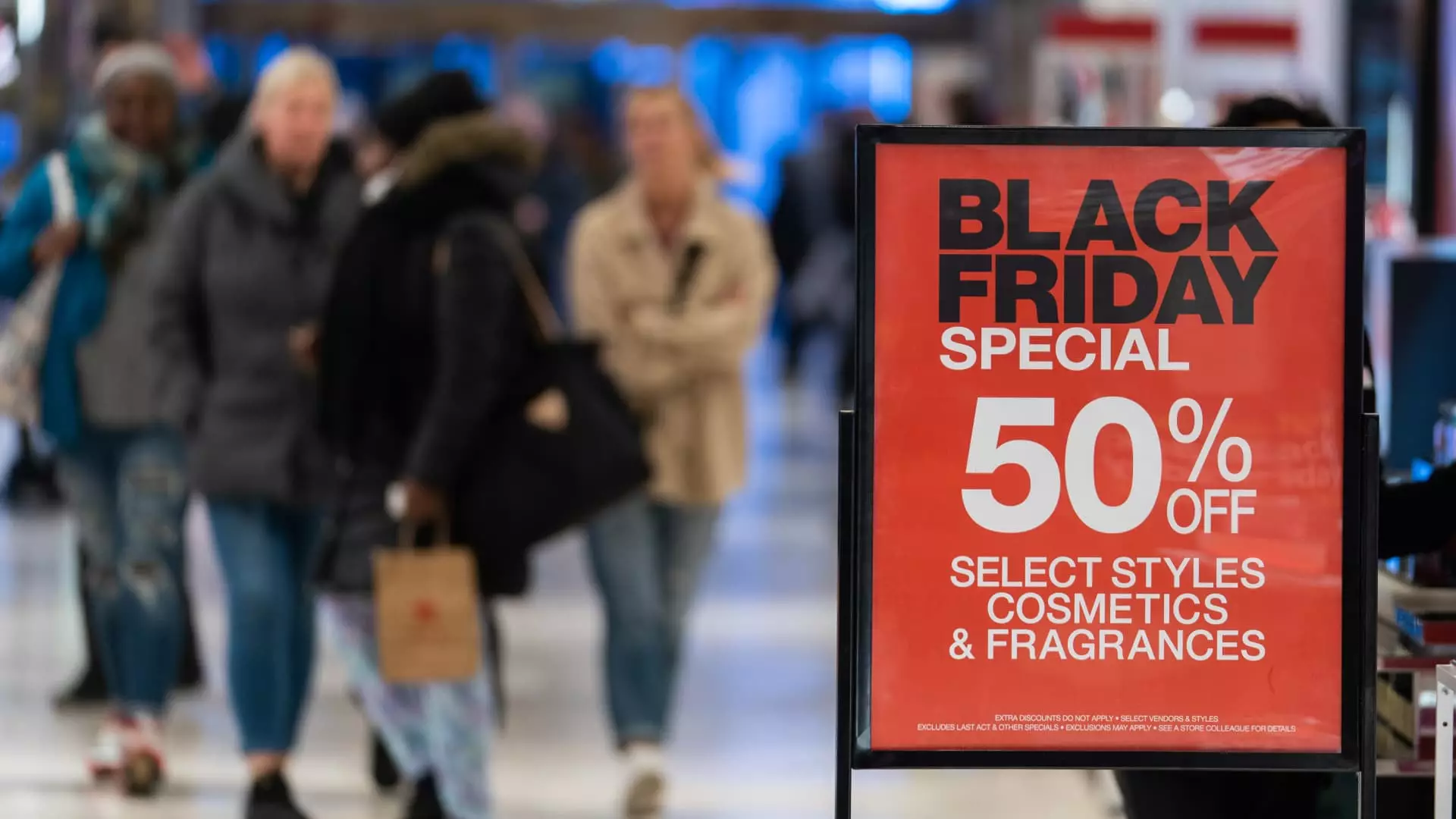As Thanksgiving draws near, the anticipation of Black Friday—a day known for its deeply discounted prices and frenzied shoppers—grows among consumers. The five-day period spanning from Thanksgiving to Cyber Monday is considered the zenith of shopping activity in the United States. This year, the National Retail Federation predicts record-breaking participation, indicating an ever-growing enthusiasm for retail promotions. However, amidst the excitement, a critical look at pricing reveals that not all deals are created equal. In fact, many consumers may not be scoring the savings they expect.
According to an analysis by WalletHub, a startling 35% of items offered at major retailers during the Black Friday regime are not discounted compared to their pre-sale prices. The comparison underscores a troubling trend where retailers might inflate original prices to present a façade of substantial savings. Consumer savings expert Andrea Woroch points out that such tactics result in misleading “deals” which may divert consumers from making truly informed purchasing decisions.
This season, a prevailing factor is the diminished window for retailers to capitalize on holiday spending. The period between Thanksgiving and Christmas shrinks significantly in 2024, leaving retailers scrambling to maximize profits. Adam Davis, managing director at Wells Fargo Retail Finance, suggests that this compression could result in heightened promotional activity earlier in the season as retailers seek to attract consumers. The allure of holiday sales is incessantly promoted, but it bears mentioning that these promotions may not equate to substantial savings, particularly for certain items.
The changing landscape of shopping behavior also merits attention. With so much shopping now occurring online, consumers have begun to voice concerns over timely delivery, especially around pivotal days like Black Friday and Cyber Monday. Patrick Kelleher, CEO of DHL Supply Chain for North America, acknowledged that delays are becoming increasingly probable due to high order volumes coupled with a labor shortage in logistics—factors that render the supply chain precarious.
Understanding the Price Dynamics
Retailers are now nudging consumers to start shopping early due to the aforementioned delivery concerns. Experts point out that with more packages to process, shipping times can elongate and lead to increased risks of damage or loss during transit. Lauren Beitelspacher, a marketing professor at Babson College, reflects on how consumer expectations have evolved; the convenience of instant gratification has made many unaware of the intricate logistics behind their purchases. However, the ongoing labor challenges are a stark reminder of the underlying vulnerabilities in the system.
While it may seem tempting to expect steep discounts during the holiday, consumers should exercise caution. Substantial markdowns might only be found at certain retailers or for specific categories. According to Beitelspacher, premium brands like Nike and Lululemon are unlikely to offer discounts exceeding 20% to 30% as they maintain a delicate balance of brand integrity and consumer price sensitivity.
For those aiming for the best deals, it’s prudent to be strategic about the timing of purchases. Traditionally, Black Friday offers significant reductions on fall apparel, electronics, and household items. However, holidays like Cyber Monday might present better opportunities for beauty products and footwear. Additionally, “Travel Tuesday” has emerged as a prime occasion to snag enticing deals on airfare and vacation packages.
Moreover, for specific items such as toys and holiday decorations, patience could be rewarded. Prices on toys often decrease in the last couple of weeks leading up to Christmas, while decorations may see better price points as the holiday draws to a close. Furthermore, January is recognized for white sales where linens and exercise equipment tend to undergo significant markdowns.
To navigate the festive shopping landscape effectively, consumers can leverage technology. Price-tracking browser extensions like Honey and Camelizer provide invaluable insights into price changes, alerting shoppers when prices drop on desired items. Additionally, apps like ShopSavvy assist in comparing prices across different retailers, ensuring that consumers can capitalize on the best available deals.
Furthermore, taking advantage of combined discounts can increase savings. By utilizing credit card rewards in tandem with coupon codes and cashback websites, shoppers can significantly reduce their overall expenditure. Additionally, keeping abreast of price adjustment policies can safeguard against post-purchase price drops, offering an avenue for recouping funds.
While Black Friday and subsequent sales present a tantalizing opportunity to save, consumers must remain vigilant. By employing strategic shopping methods and understanding the underlying dynamics of pricing strategies, shoppers can make the most out of their holiday spending without falling victim to misleading deals. With a careful approach, the holiday shopping season can be rewarding both in experience and in savings.

